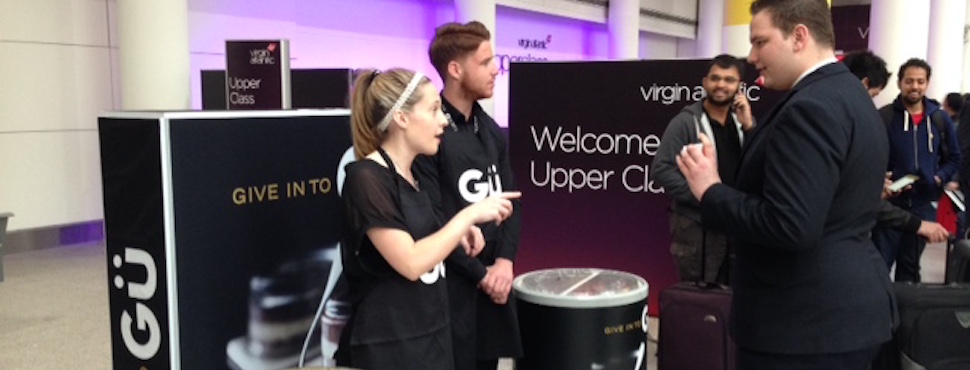Ian Priestman, head of experiential at Blackjack Promotions reveals how the key learnings from travel retail and experiential marketing can be combined to form a powerful engagement tool.
Travel retail is now big business, with airports quickly developing into favourite shopping destinations for consumers with the time to browse and the spending power to buy.
Increasing competition for airport retail space, means experiential marketing can hold the key to brands standing out from the crowd and grabbing consumers’ attention. The right kind of activity helps travellers pass the time as they wait for their flight, gives them the chance to try products before they buy, and drives them in-store to make a purchase. Create a good experience, and the chances are travellers will also spread the word to families, friends and business contacts.
Here are five tips for creating airport experiential activity with impact…
Plan from the start
Great experiential begins with great planning. To meet a brand’s marketing objectives, it should be integrated into any retail activity from the start – whether that’s airport-specific or the wider marketing, trade or consumer goals. It should never be a last-minute bolt on and should be factored into your airport activity budget from outset, so that it can sit alongside and complement other marketing activity.
KPIs, targets and other relevant metrics should be built into your experiential plans, with key learnings reviewed at the end of each activity and incorporated into future planning.
Understand the airport environment
You may find the same retailers in airports as you do on the high street, but airport retailing is different in terms of the strict safety and security requirements, leading to far more red tape.
International airports, for example, effectively have their own borders, with checkpoints and border guards.
So choose a media and marketing partner with experience of working ‘airside’ and the knowledge and confidence to handle the specific retail challenges that airports can create, along with the necessary security-cleared brand ambassadors and staff.
Remember the brand and its target audience
Any activity you create must remain true to your brand values and target the required audience.
If you’re a luxury brand usually bought at the airport as a gift, such as a high-end spirit or perfume, surprise and delight are key, so should be incorporated into any experiential activity.
If you’re a tech brand, say a laptop, tablet or mobile phone, then show how your products can help people perform relevant tasks, such as providing information about connecting flights, the weather at a particular destination and how to access emails.
Be at the right airport and the right terminal
Just as travellers can turn up at the wrong terminal, or even the wrong airport, brands can too. Even airports serving the same city can have different passenger demographics, so what works for a brand in one won’t in another. The same applies to terminals, so do your research and make sure you’re in the right one!
Don’t just look at passenger numbers, dive into the demographics. Examine variations by terminal, day and time of day. We’ve even advised clients on what specific bars across a single terminal they should run activity alongside.
Time of day is particularly important factor for major international airports like Heathrow or Gatwick, because passenger profiles change radically depending on what flights are departing or arriving.
Don’t forget to check your calendar for key events – and not just for the airport location, but also for those countries where large numbers of passengers are travelling from. The Chinese New Year may not be relevant to those native to an airport’s location, but it will be to those travellers departing flights from China.
Leverage your activity
Experiential can be a success on its own, but it works far better when integrated into a campaign, and particularly well when linked to PR and social media activity.
It should also never be just about sales. Even if driving people in-store to buy is the primary short-term objective, always plan for the long-term. Use supporting PR and social media to leverage your experiential activity and prolong audience engagement, whether consumers buy your products, directly interact with your campaign or are just exposed to your brand as they travel through the airport.
What’s more, experiential, properly handled, should provide masses of content for subsequent marketing communications, whether on your website, on Facebook, Twitter or any other online channels your audience frequents. In fact, it’s becoming increasingly popular for brands to use video and other content from experiential activity as the focus for above-the–line campaigns.
Finally, don’t forget that your brand ambassadors on the ground will be speaking directly with your target audience. They aren’t just collecting data: they are collecting information that can be used to generate real insights into what your market thinks.

